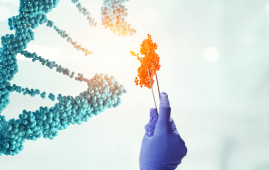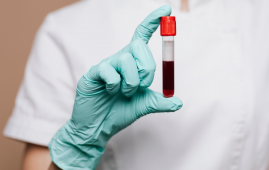

Scientists at the Texas Biomedical Research Institute have discovered a hopeful strategy to combat tuberculosis (TB), a disease that still claims nearly 2 million lives yearly. In order to strengthen the body’s capacity to control infection, the study focuses on a possible host-directed therapy that targets the immune system, a strategy that has been shown to enhance cancer treatments.
The group discovered that blocking an enzyme called IDO—short for Indoleamine 2,3 dioxygenase—aided nonhuman primates in totally eradicating active TB infection. Compared to using antibiotics alone, blocking IDO for four weeks resulted in better health measures. JCI Insight published a report on the results.
“This is exciting,” says Texas Biomed Professor Smriti Mehra, Ph.D., who led the study. “We have promising results suggesting an IDO inhibitor could be a host-directed therapy that reduces the length of time and amount of antibiotics that TB patients have to take, especially those with multi-drug resistance.”
The top two infectious diseases in the globe are still malaria and tuberculosis, respectively. For months, sometimes even for a year, patients must take dozens of pills daily as part of the current treatments in order to manage the bacterial infection. Many people with TB have a milder, latent version of the disease, which can reactivate years later after being exposed to another illness like HIV. The mixture of the two infections frequently turns out to be fatal.
Better medical choices are required for both patients and doctors. IDO has long piqued the curiosity of Professor Mehra and her associates. immunological system protein IDO is known to inhibit other immunological reactions. While Professor Mehra and her colleagues were the first to identify its role in TB in 2018, cancer researchers have investigated blocking it to enhance cancer therapy.
In that study, it was discovered that IDO hinders the ability of vital immune cells to eradicate the TB-causing pathogens Mycobacterium tuberculosis (M.tb). The germs are typically located in the lung’s granulomas, which are circular structures. Immune cells assemble in granulomas and encircle the bacteria.
The researchers discovered that the intermediate myeloid layer of the granuloma contained a significant amount of IDO. IDO levels in the granuloma decreased when IDO production was inhibited, which allowed the body to eliminate more bacteria. They postulate that when there is less IDO present, more immune cells can penetrate the granuloma and carry out their functions.
That investigation was expanded upon in the JCI Insight article to examine whether inhibiting IDO improves TB treatment. The team from Texas Biomed and Southwest National Primate Research Center, which included scientists, veterinarians, and pathologists, evaluated the health of groups of macaques with active TB infections before, during, and after receiving antibiotic treatment alone, antibiotic therapy alone, and antibiotic treatment plus the IDO inhibitor. A lower-than-normal dose of antibiotics was administered for 12 weeks while the inhibitor was provided for four weeks.
The outcomes demonstrated that the animals receiving the IDO inhibitor outperformed those only receiving antibiotic therapy.
“The animals given the IDO inhibitor cleared TB completely from the lungs, granulomas, and other organs,” says Bindu Singh, Ph.D., a postdoctoral research fellow at Texas Biomed and first author of the paper. “Most animals are given just antibiotics also controlled the infection well, but still had some bacteria in there.”
The research team notes the data were not statistically significant, but it does show potential benefits for clearing infection faster than with antibiotics alone and could be especially helpful for patients with antibiotic-resistant bacteria.
“Taking antibiotics for months isn’t great for the body, so this is something we are hoping we can advance to reduce the time and high dosage currently required to treat TB,” Dr. Singh says.
Before beginning human clinical trials, there is still much research to be done. For example, it is still unclear how precisely the IDO inhibitor works to fight Tuberculosis or how much or how long to administer the IDO blocker. In addition, the team is examining whether blocking IDO stops latent TB from reactivating in the presence of SIV, the nonhuman primate counterpart of HIV.
“The leading killer of people with HIV is reactivated TB, so if we could reduce TB reactivation levels, that would be a very important avenue to explore further,” Professor Mehra says.
more recommended stories
 DNA Damage Triggers New Cell Death Pathway
DNA Damage Triggers New Cell Death PathwayTumor cells are killed by chemotherapy,.
 Comorbidities Worsen Sleep Quality in Multiple Sclerosis
Comorbidities Worsen Sleep Quality in Multiple SclerosisComorbidities in multiple sclerosis (MS) are.
 Latitude and Skin Type-Based Vitamin D Guidelines
Latitude and Skin Type-Based Vitamin D GuidelinesIn a recent study published in.
 AOMs Reduce CVD Risk in Obese Medicare Patients
AOMs Reduce CVD Risk in Obese Medicare PatientsObesity is a leading cause of.
 Dopamine Linked to Brain Development in ASD
Dopamine Linked to Brain Development in ASDSummary: A recent study links autism.
 Microplastics in Human Blood: Cardiovascular Risk
Microplastics in Human Blood: Cardiovascular RiskAn investigation disclosed in the esteemed.
 Gene Therapy Offers Hope for X-linked Sideroblastic Anemia
Gene Therapy Offers Hope for X-linked Sideroblastic AnemiaALAS2 gene mutations that are essential.
 Mini Brains: Advancing Alzheimer’s Research
Mini Brains: Advancing Alzheimer’s ResearchIn summary, scientists created microscopic “mini-brains”.
 Inflammatory Bowel Disease Linked to Parkinson’s Disease
Inflammatory Bowel Disease Linked to Parkinson’s DiseaseBoth inflammatory bowel disease (IBD) and.
 NMSC Skin Cancer: Rhenium-188 as Surgery Alternative
NMSC Skin Cancer: Rhenium-188 as Surgery AlternativeAccording to a recent study published.

Leave a Comment